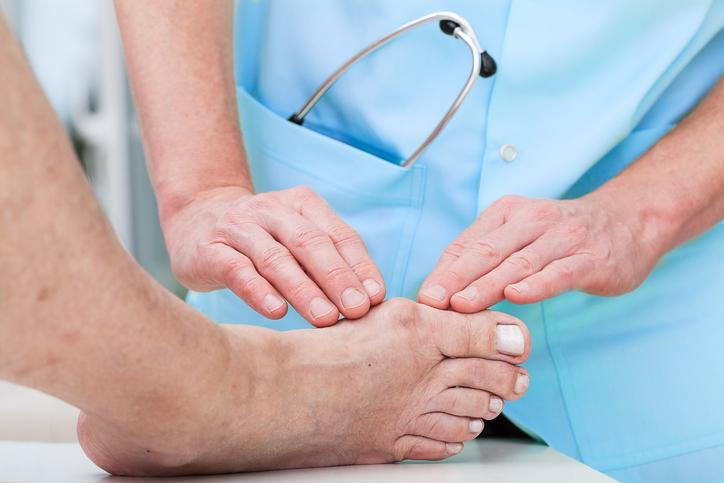Bunion Basics: What You Need to Know
posted: Jan. 14, 2018.

A bunion is a physical deformity in which the big toe points toward the second toe, causing a bump on the outside edge of that big toe. It can gradually develop when there is constant pressure on the big toe joint.
This can be caused by some changes in the foot’s anatomy that may result in a person’s uneven weight shift on the foot’s joints and tendons.
Many believe that bunions are caused by tight-fitting (high-heeled) shoes perhaps due to the fact that bunions are more common in women than in men. However, you should know that footwear alone cannot cause the condition; although it may exacerbate an already existing bunion because of the way those shoes keep the big toe in the wrong position.
Bunions also seem to run in families, suggesting that there may be some genetic factors behind, including foot shapes and structures that eventually lead to bunions.
Some of the conditions that may contribute to the development of bunions include:
- Low arches or flat feet
- Loose joints and tendons
- Marfan syndrome, Ehlers-Danlos syndrome, Down syndrome, and other connective tissue disorders
- Neuromuscular disorders like Charcot-Marie-Tooth disease and cerebral palsy
- Foot injuries
Bunion Symptoms
So you might be worried that you have a bunion, but you’re not sure. Here are some of its common symptoms:
- Trouble walking normally
- Pain (that gets worse) in the joint of the big toe
- Inflamed skin along the outer edge of the big toe
- Burning feeling
- Numbness of the big toe
- Calluses where the toes rub
Bunions may start off small and unnoticeable, but they can really grow over time if you leave them untreated. As they progress, they can become more and more painful and hard to walk. In some severe case, the big toe extends over or even below the second toe. This puts more pressure on the second toe that is pushed out of alignment and pressed against the third toe. Additionally, if left untreated, a bunion may escalate to other conditions like hammertoe, metatarsalgia, or bursitis.
Treatment
Initially, the treatment of bunions is conservative, focusing on relieving symptoms. It can include wearing wide-toed shoes, using spacers or bunion pads, using padded shoe inserts, applying ice packs or warm soaks, and taking non-steroidal anti-inflammatory drugs, among others. If the patient experiences pain and feels like the bunion is disabling him or her, a surgery may be necessary.
If you need to know more about bunions, don’t hesitate to call Sheldon Nadal, DPM today!
For more information on bunions, click here.